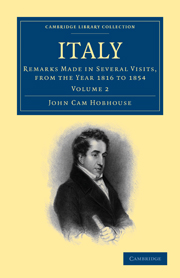Summary
THE CAPITOL.
Ruin and restoration have entirely effaced every vestige of the domicil of all the gods. The greatest uncertainty hangs over this hill. On which side stood the citadel, on which the great temple of the Capitol—and did the temple stand in the citadel? Read everything that has been written on the topography of a spot four hundred yards in length, and two hundred in breadth, and you will know nothing. Four temples, fifteen chapels (ædes), three altars, the great rock, a fortress, a library, an athenæum, an area covered with statues, the enrolment office, all these are to be arranged in the above space: and of these the last only can be with precision assigned to the double row of vaults corroded with salt, where the inscription of Catulus was discovered. The Athenælum, perhaps, may have been where the prisons and senator's palace now stand. The Tarpeian rock is divided, by the beggars who inhabit the cottages, between the two angles towards the Tiber; the highest is that called Monte Caprino, behind the gallery of the Conservators' palace; the most abrupt is the corner at the other end of the same Conservators' palace. Which of these two is the actual precipice whence the traitors were thrown, has not been yet resolved. The citadel may be believed to have extended along the whole side of the hill.
The great capitoline temple was placed by Nardini on the Aracœli; but doubts have again shaken this presumption, and the Feretrian Jupiter has put in his claim to that elevation.
- Type
- Chapter
- Information
- ItalyRemarks Made in Several Visits, from the Year 1816 to 1854, pp. 1 - 41Publisher: Cambridge University PressPrint publication year: 2009First published in: 1859



